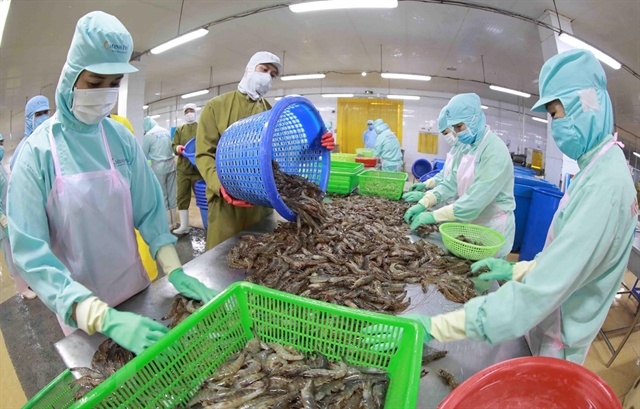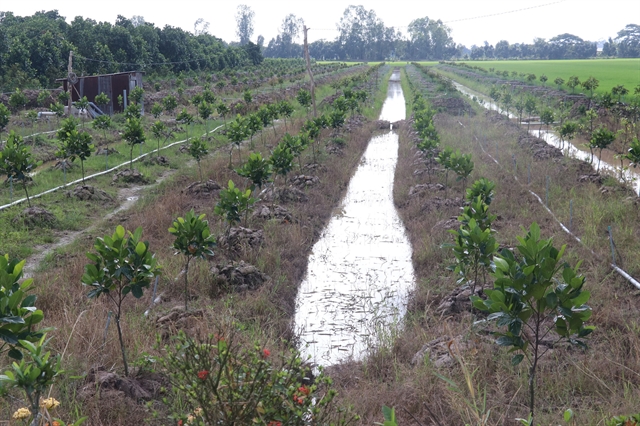 Economy
Economy

The energy section has not been spared the impact of COVID-19 restrictions, as demand for gas fell dramatically in the first eight months of this year, reports Petrolvietnam.
.jpg)
HÀ NỘI — The energy section has not been spared from the impact of COVID-19 restrictions, as demand for gas fell dramatically in the first eight months of this year, reports PetroVietnam.
The demand for gas for electricity generation is significantly lower than this time last year. The southeastern region of Việt Nam recorded only 87.5 per cent comparatively, and the southwest only 72.7 per cent.
The demand for gas has fallen since the end of April 2021, when the latest outbreak of the COVID-19 pandemic swept through Việt Nam. This has been especially felt in the southern cities and provinces that have recorded the most cases, particularly in July and August.
It is thought that the COVID-19 pandemic will remain unpredictable for the rest of the year and that a return to normal work is unlikely.
Some agencies have predicted that Việt Nam’s economic growth in the remaining months of the year will remain low compared to the start of the year.
Domestic power plants are now the main consumers of the gas industry, accounting for 80 per cent of gas output. The decline in demand gas has reduced the capacity of gas producers, which will, in turn, lead to a reduction in gas production in offshore oil and gas fields.
The impact of this will be a major loss of revenue for the state that is collected through environmental tax, corporate income, value-added and export taxes. Budget revenue will also fall due to the decrease in gas transportation activities.
Because of low demand, gas buyers are required to pay in advance with a large amount of cash. This in turn causes an impact on the cash balance of the buyers.
Low gas demand will also lead to a significant decrease in budget revenues for cities and provinces against last year. The southern Bà Rịa-Vũng Tàu province alone is expected to see a decline of VNĐ435 billion in its budget revenue. This will be mirrored across other towns and cities.
Forecasts speculate that demand for electricity production will continue to decline in 2022. Gas for power production in the southeast region is forecast at a maximum of 2.8 billion m³, while gas input will drop to 755 million m³ in the southwest region. This will cause a strong decline in tax revenue in these cities and provinces next year.
This fall in demand is reflected in the low load demand across the electricity market. The power industry is facing an excess power problem, as businesses minimise or halt their production activities amid the COVID-19 pandemic.
Ironically, this issue is antagonised further by the number of renewable energy projects that have recently been put into operation, increasing supply to the national grid.
Currently, electricity prices offered by renewable energy plants are much higher than from gas-fired power plants. According to industry insiders, the decline in gas mobilisation and the introduction of new, renewable sources has lead to higher electricity prices.
Profits of many businesses in the oil and gas sector dropped in the third quarter of this year due to impacts of the COVID-19 pandemic.
The Petrovietnam Gas Joint Stock Corporation (PV Gas) suffered a drop of 11.5 percent and 7 percent in pre-tax and after-tax profit in the third quarter of this year to 2.29 trillion VND and VND1.86 trillion, respectively.
In the first nine months of this year, demand for gas of its customers decreased. Particularly,Idemand for gas for power generation was equal to only 72 percent of that in the same period last year.
Meanwhile, due to stagnant production situation, the domestic demand fell 35-40 percent year for liquefied petroleum gas (LPG), 30 percent for low-pressure gas and compressed natural gas compared to that before COVID-19 broke out.
National energy security
Natural gas is considered a clean source of energy for electricity production with low greenhouse gas emissions. Using gas for the country’s power production does help minimise the negative impacts on the environment.
The fall in demand for energy has harmed domestic oil and gas exploration and exploitation, especially in deep water and offshore areas. Failure to make full use of the country’s natural resources will negatively affect foreign investment into liquefied natural gas (LNG) projects, which are important in addressing the growing energy demand on the national power grid.
The rapid decline in gas mobilisation for power generation has made impacted imports of LNG, following Decision No. 2233/QĐ-TTg dated December 28, 2020, in which the Prime Minister approved a plan to develop a competitive energy market by 2030.
In the short term, this impacts investment and construction of LNG projects to meet national energy demands. At the same time, as restrictions are relaxed, energy demand will increase, leading to a shortage of energy supplies. Infrastructure constraints will also limit LNG imports.
Việt Nam has a favourable geographical location and convenient LNG transportation route including many deep-water ports and existing gas infrastructure systems that can be used. Developing the LNG sector is an inevitable trend for Việt Nam to diversify fuel sources for electricity generation and contributing to ensuring energy security for Việt Nam. — VNS









